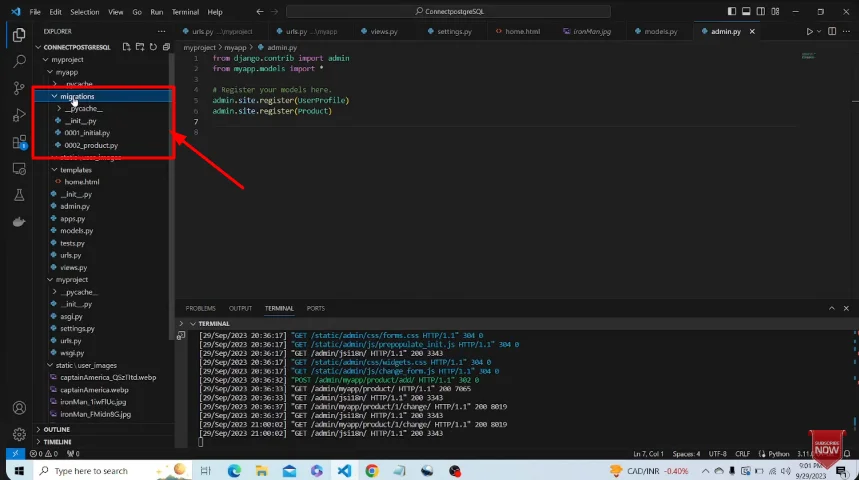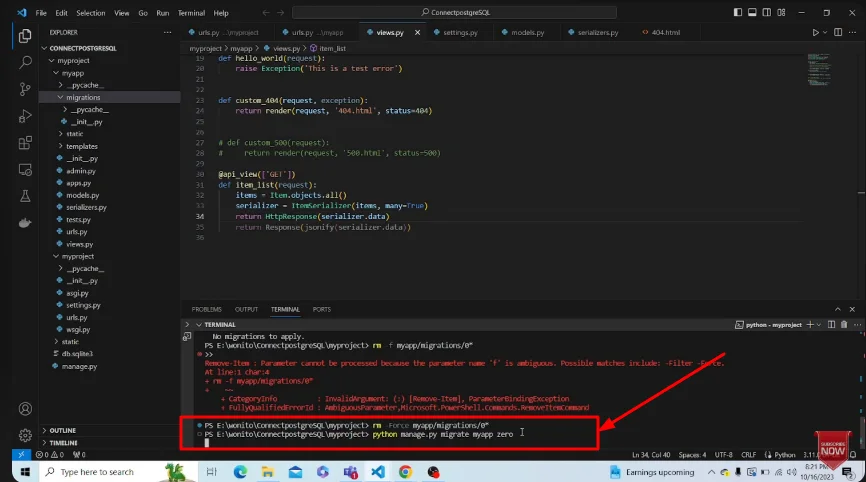Running into issues with Django migrations? Whether you’re refactoring models, fixing a migration exception, or just want to start fresh, resetting migrations is a common (and smart) move for Django developers.
In this guide, we’ll walk you through how to delete all migrations, revert Django migration code, and reinitialize your database properly, without leaving your project in a broken state.
- Understanding Django’s Migration System
- When Should You Reset Migrations?
- How to Reset Migrations in Django (Clean Slate)
- How to Revert or Undo Specific Migrations
- How This Compares to Sequelize and Laravel
- Summary Table: Commands At a Glance
- Developer FAQs
- Related Migration Topics & Concepts
- Explore More Step-by-Step Guides
- Wrapping Up
Understanding Django’s Migration System
Purpose: Educate beginners who may not fully grasp how migrations work in Django. Helps with keywords like Django migration, Django models, how Django handles database schema changes.
Content Idea:
Briefly explain how Django uses migration files to track changes in models and apply them to the DB. Mention makemigrations, migrate, showmigrations, etc.
Precautions Before Resetting Migrations
Purpose: Helps with trust-building and protects beginners from mistakes. Also supports keywords like migration exceptions, reset migrations Django applications.
Content Idea:
- Backup your database if it contains important data.
- Use
--fakecarefully. - Don’t delete migration files in production apps without proper versioning.
- Communicate changes with team members if you’re in a shared repo.
Tools That Help With Migration Management
Purpose: Modern devs love tools. This section could help target django applications, migration helpersand increase session time.
Content Idea:
Mention tools like:
- Django Extensions
- DB browser (SQLite Studio, pgAdmin)
- Linters or Git hooks that prevent migration messes
When Should You Reset Migrations?
Here are some common cases where you’d want to remove Django migrations and start again:
- Major structural changes in your
models.pyfiles - Migration files that were pushed or pulled incorrectly in version control
- Errors during
makemigrationsormigratesteps - Testing a new app setup and need to reset everything
- Facing migration exceptions, like conflicting or corrupt migration histories
Also, if you’re used to tools like Sequelize or Laravel, you might be wondering how to undo migration in Sequelize or how Django migration reverse_code Works — we’ll cover those ideas too.
How to Reset Migrations in Django (Clean Slate)
Let’s walk through the exact steps to safely reset migrations and database schema in your Django app.
Step 1: Stop the Django Development Server
If your development server is running, stop it with:
CTRL + C
You don’t want to make database changes while it’s active.
Step 2: Delete Migration Files

Inside each Django app, locate the migrations/ folder and delete all files except __init__.py.
cd your_app/migrations
rm 000*.py
This step clears the migration history. Make sure you repeat it for each app where migrations need resetting.
Step 3: (Optional) Delete the Database
If you want a truly fresh start, delete your database. For SQLite:
rm db.sqlite3
Using PostgreSQL or MySQL? Drop and recreate your database using your DBMS (like pgAdmin, MySQL Workbench, etc).
Step 4: Recreate Migration Files

Now generate fresh migrations based on the current state of your Django models:
python manage.py makemigrations your_app
Replace your_app With the actual name of your Django app.
Step 5: Apply the New Migrations

Finally, run:
python manage.py migrate
This will apply all new migrations to a clean database schema.
How to Revert or Undo Specific Migrations
If you don’t want to reset everything, you can also revert a single migration:
python manage.py migrate your_app 0001
Or, if you want to undo all migrations for that app:
python manage.py migrate your_app zero
This is often used when testing or debugging a particular migration reverse_code block.
How This Compares to Sequelize and Laravel
- In Sequelize, you’d use:
npx sequelize db:migrate:undo - In Laravel, revert migrations with:
php artisan migrate:rollback
In all frameworks, the concept is the same: remove migration history, then reapply clean schema changes.
Summary Table: Commands At a Glance
Purpose: Quick-reference section improves usability and lets readers scan for help quickly (great for bounce rate).
Example:
| Command | Description |
|---|---|
makemigrations | Creates new migration files |
migrate | Applies migrations to the DB |
showmigrations | Displays migration status |
migrate app zero | Rolls back all migrations for an app |
Developer FAQs
How do I cancel migrations in Django?
Run:
python manage.py migrate your_app zero
This reverts all applied migrations for a specific app.
How do I fix a fake migration?
If you used --fake incorrectly run:
python manage.py migrate your_app <last_real_migration>
Then apply the correct migration without --fake.
How do I clear all migrations from my Django project?
Delete all files in each app’s migrations/ folder (except __init__.py), remove the database, and recreate it with makemigrations and migrate.
How do I stop the Django server?
Simply press CTRL + C In the terminal window where it’s running.
Related Migration Topics & Concepts
- Django revert all migrations
- Django migration reverse_code
- Undo migration Sequelize
- Reset migrations for Django applications
- Merge conflicts in Django migrations
- Undo migration Laravel
- Migration exceptions in Django
- Django remove all migrations and start again
Explore More Step-by-Step Guides
We specialize in simplifying complex processes — from backend fixes to digital subscription management. Check out some of our most-read tutorials:
- How to Cancel Shopify Subscription
- Cancel Xfinity Internet
- Cancel LinkedIn Premium in Minutes
- Stop iCloud+ or Storage Plan
- Cancel PayPal Account – Full Guide
- How I Cancelled Dropbox Subscription
Wrapping Up
Resetting migrations in Django might seem like a heavy move, but it’s often the cleanest way to eliminate hidden issues, start fresh, or recover from migration mistakes. As with any dev tool, the key is understanding when and how to use it.

